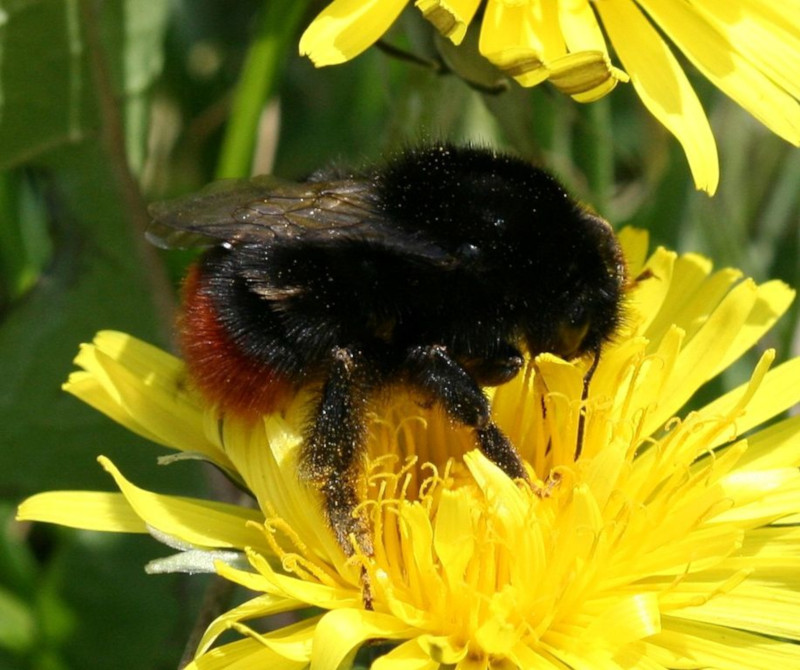
Red-Tailed Bumblebee Facts
- This beautiful creation of Nature and evolution most frequently goes by the simple, yet descriptive, common name of the Red-Tailed Bumblebee. It does have a few other titles, though. These include Stone bumblebee, Lapidary bumblebee, and Fire-tailed bumblebee.
- Inside of the scientific world, however, it’s perhaps much better known by its technical designation. Thankfully, that’s a comparatively simple one for the layperson to pronounce. That’s because this beautiful biological wonder bears the official moniker Bombu lapidarius.
- The invertebrate received that epithet due to the efforts of the famous Carl Linnaeus himself. That renowned Swedish zoologist accomplished the first formal acknowledgement of it as a separate and distinct species. He achieved that scientifically noteworthy deed in the year 1758.
- Fortunately, the amazing Red-Tailed Bumblebee appears to be maintaining a population base that’s still stable and sufficient. That state also seems to hold true throughout the entirety of its natural habitat range. The IUCN therefore does not currently show it on its published Red List.
- Lamentably, it does appear to be declining in some agricultural areas, though. That’s generally attributed to a combination of pesticide use, monoculture crops, and intensive farming practices. Due to this, it’s now considered Near Threatened in specific portions of its range.
- It also must deal with the same greater dangers as all other forms of life on the planet today. Most of those hazards stem from the actions of mankind. Although many of these exist, its greatest threats likely consist of the closely related one’s of habitat loss and climate change.
Related Articles
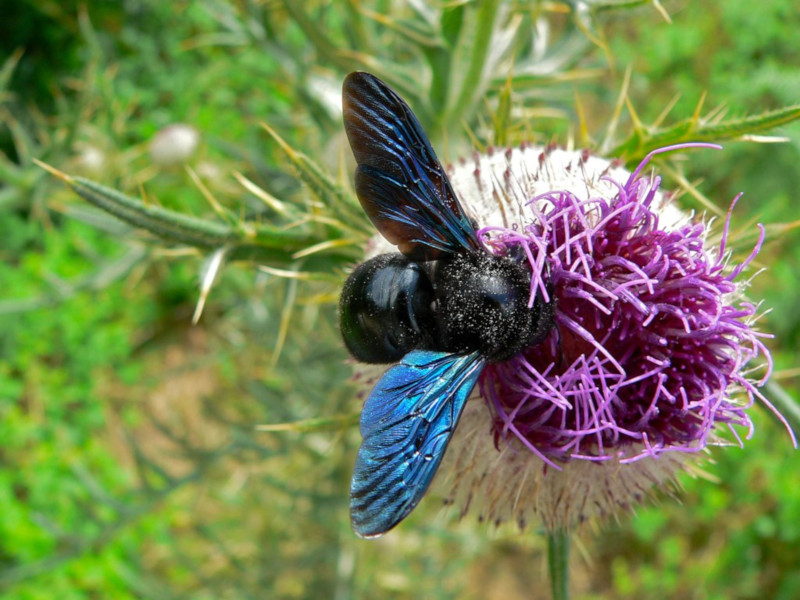
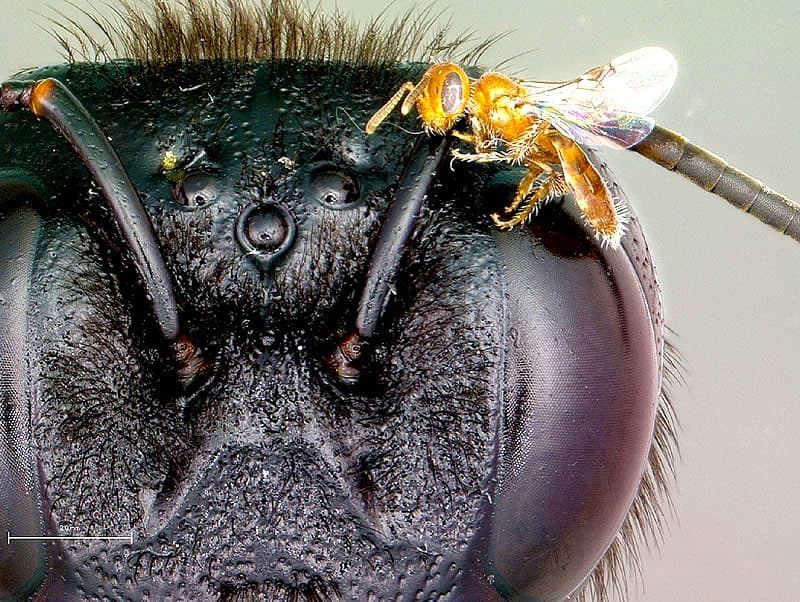
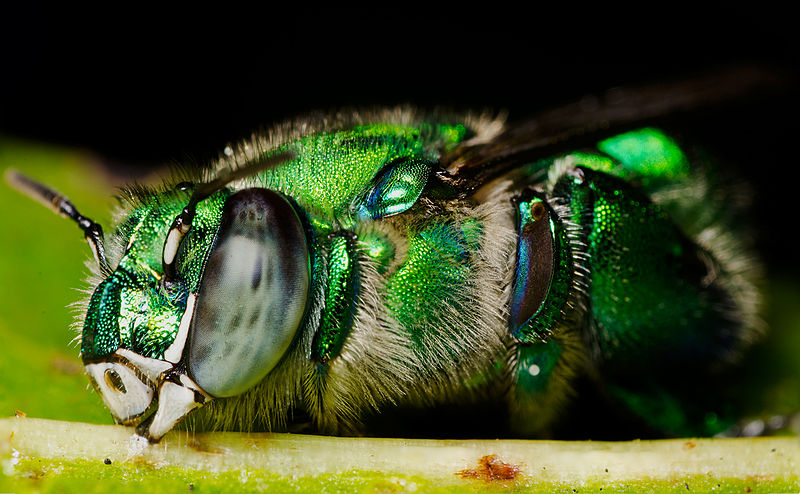
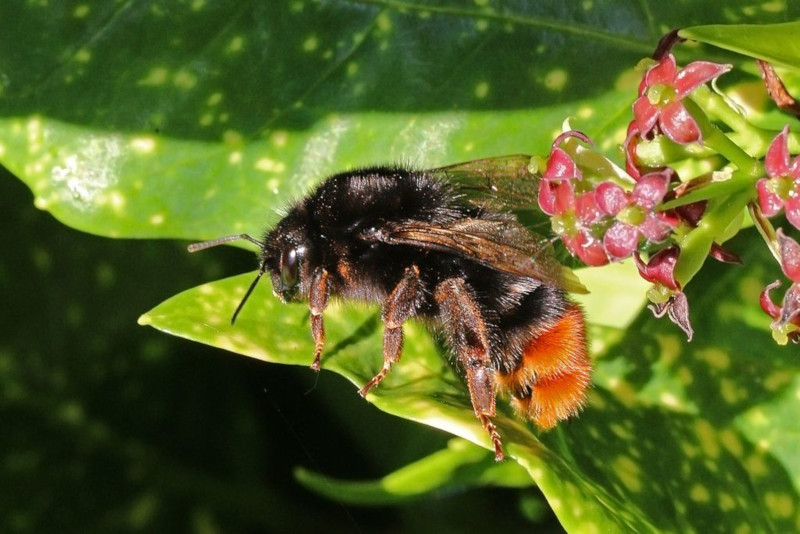
Red-Tailed Bumblebee Physical Description
The visually striking Red-Tailed Bumblebee almost always receives its due measure of attention from those who encounter one of these marvels. Yet, that does not happen due to any impressive physical statistics. That’s true since, even among its many relatives, it’s a slightly small bee.
It does, however, follow an evolutionary pattern common among may species, including its kindred. That’s the fact that it displays a moderately high degree of the physiological trait of sexual dimorphism. In its case, this characteristic manifests itself in terms of both color and pure size.
In terms of its size, males of this Arthropod attain a slightly greater average size than their female counterparts. This gender typically averages between 0.55 – 0.63 in (14 – 16 mm) in total length. The females of the species reach mean lengths equaling between 0.43 – 0.63 in (11- 16 mm).
It additionally displays this gender-based difference in terms of patterns of color. That manifests with the males of this awesome insect presenting three bands of yellow, one at the base of the abdomen, and two on the thorax. It also has the standard red tail from which it derives its name.
Meanwhile, females of the Red-Tailed Bumblebee, including the queen usually present a slightly different appearance. Interestingly, these lack any of the yellow bands. This gender of the invertebrate also displays a more extensive red-colored section, covering roughly half the abdomen.
Other parts of the body also merit attention, and present the same general patterns regardless of sex. Its wings evolved as semi-transparent, and somewhat darkened with a smoky appearance. The short legs developed as strong and rather hairy, with specialized structures on its hind appendages.
- Kingdom: Animalia
- Phylum: Arthropoda
- Class: Insecta
- Order: Hymenoptera
- Family: Apidae
- Genus: Bombus
- Species: B. lapidarius
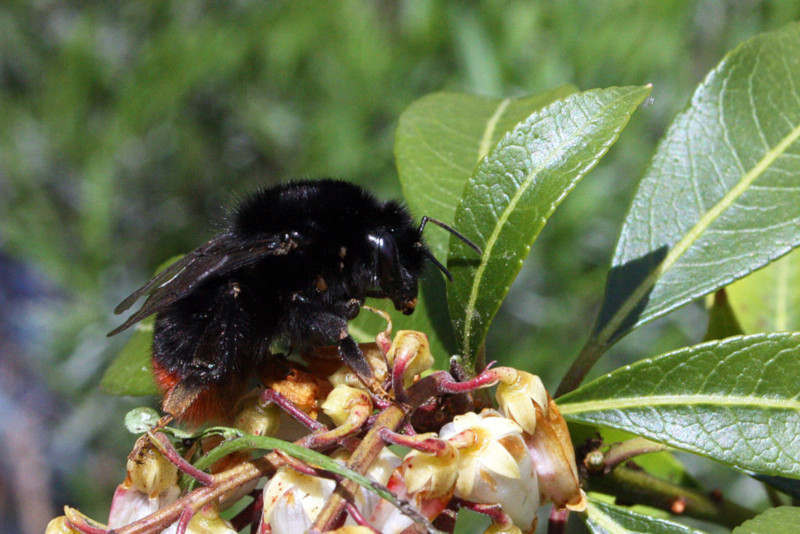
Red-Tailed Bumblebee Distribution, Habitat, and Ecology
There’s very fortunate news for those who appreciate the beauty of Nature. That’s due to the fact that the Red-Tailed Bumblebee evolved as native to a relatively broad swathe of the world. More specifically, it developed as indigenous to a particular portion of the continent of Europe.
With further precision, in this region population concentrations appear throughout the entire zone of habitation. The diminutive creature does, however, appear in greater concentrations in certain areas. These include the countries of Greece, Britain, Sweden, Finland, and Germany.
Sadly though, in the country of Ireland its numbers seem to be declining rapidly. Wherever the insect lives, however, it typically proves itself to be highly adaptable in terms of where it makes its home. That’s because population groupings manifest in several very different habitat types.
These locations even include such public regions as private gardens and public parks. It most commonly chooses to live in areas consisting of very open terrain, though. Unlike some varieties of related species, though, it generally avoids living in areas of moderate to heavy forestation.
The beautiful Red-Tailed Bumblebee generally makes its appearance in the summer, between June and August. Being social insects, like many Hymenoptera, all members of the hive work closely together. In its case, there’s little hierarchy among workers, just between them and the queen.
Most types of bumblebees generally stay close to their own hive when foraging. This one, however, tends to roam relatively great distances in search of food sources. Some individuals, in fact, venture as much as 5,741 ft (1,750 m) from the hive. For one of its kind, that’s an extreme distance.
The hives themselves, meanwhile, appear in widely varied types of locations. In this, it shows itself to be a highly opportunistic species. Locations for nests include such unexpected areas as under large stones or fallen logs. Colonies remains small, though, rarely exceeding 200-300 individuals.
Species Sharing Its Range
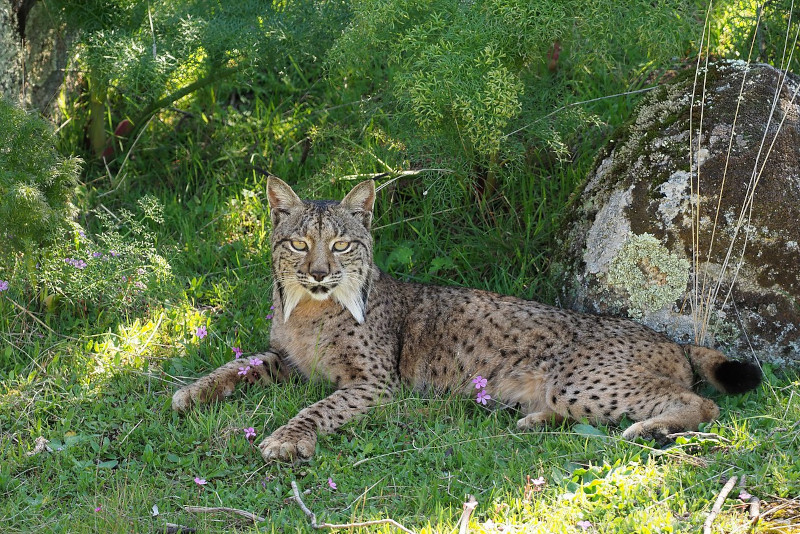
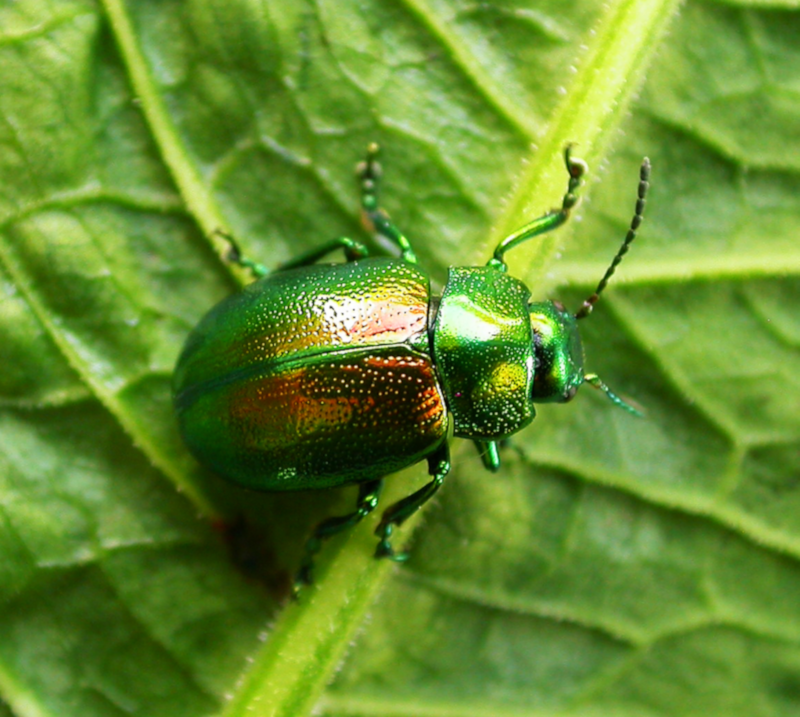

Check out our other articles on 4 Fabulous Marine Shrimp, Indian Bullfrog, Cypripedium calceolus, Victoria Falls, Swift Fox, Tufted coquette, Crocodilefish, Executioner Wasp, Jackson’s Chameleon









Leave a Reply